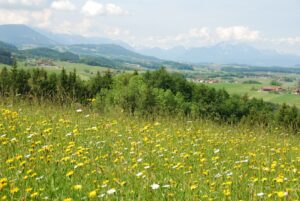Denutrification by early usage – Effects on flora and fauna

Topics & aims: Oligotrophic grasslands have declined significantly in recent decades. The reason for this is the input of nutrients as well as the discontinuation of traditional forms of land-use. Lowyields often result in abandonment of use. These trends often lead to degradation of numerous FFH grassland habitat types. This activity aims to develop strategies to remove nitrogen from these valuable ecosystems through additional early use and thus a slightly modified use regime. In addition, this may promote spatial heterogeneity at the landscape scale and increase nectar availability during summer. This would maintain the habitat quality of these valuable FFH grasslands and promote biodiversity.
Approaches & methods: In order to determine the current status of expert knowledge and to weigh strengths and weaknesses, an intensive literature review will be conducted first. This literature review serves to determine the current state of knowledge, as well as to identify potential knowledge gaps. A second step is to compile ecological traits for specific target species of selected groups of organisms, such as flowering plants, insects, and birds. With this, we will analyze different effects arising from mowing versus grazing, and whether these differences can be predicted by ecological traits of the selected species. Finally, we will translate the data and findings into practical nature conservation, and combine them into a decision tree.
Contact:




